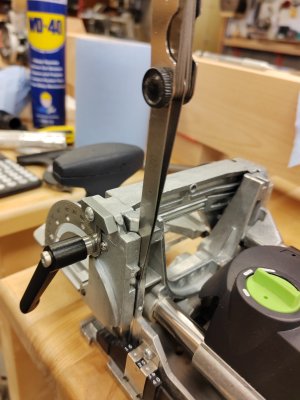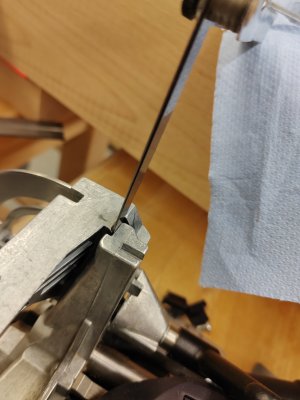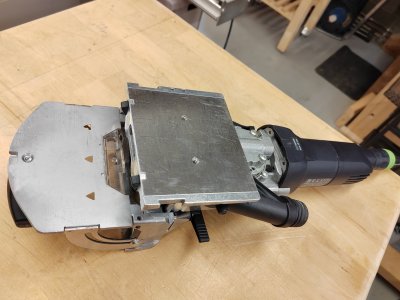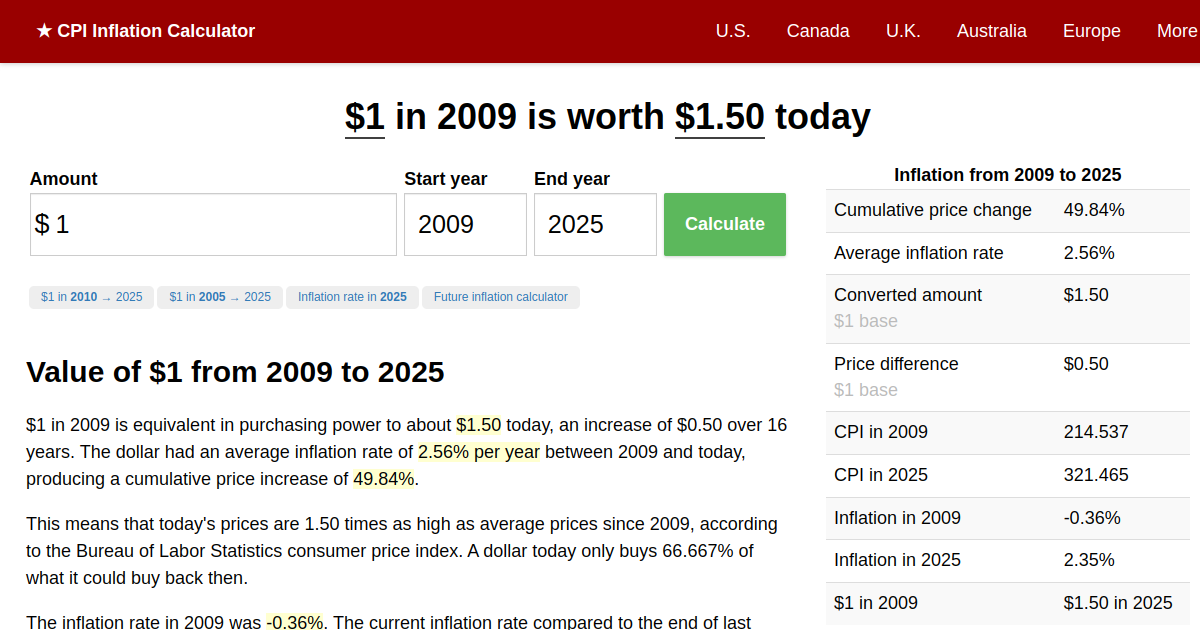This is to update the situation regarding the slippage of the horizontal fence on my Domino 500 - the core topic of this thread.
Free of charge assistance was refused during an initial phone contact with Festool service because the tool was way out of warranty.
The rep (contacted on the advice of a friend in the business) despite the tool being so old (but unused except for about a dozen cuts) got behind it and did everything he possibly could in an effort to get it sorted free of charge. Festool service however wouldn't budge - they issued an estimate claiming that the fence was worn (

???!!? - it certainly is not) and quoting what was probably the cost of a new fence to 'repair' it.
He generously however managed to come up with a used fence with a damaged horizontal fence plate in the hope that parts from it could be cannibalised to fix mine. It gripped much better than mine and transferring my moving horizontal fence plate assembly complete on to the used fence body saw the improvement retained.
It's not immovable but holds well enough to not slip in use - we have a working tool again!

The improved grip seems likely in this case to be the result of a different alignment of the three sided block that the locking lever bears on. The pivot pin to its inside is fully buried in the mating hole/socket in the replacement fence main body - the base of the block makes contact with the latter. There was initially an ~1.25 mm gap in the case of mine. I'd picked up at the start that the pin on mine was pushing that side of my block up too high (the hole/socket it drops into was likely not deep enough) - it was tilting it so that the two pads on the other side of the block were making only line contact/scraping a narrow band/line on the land they bear on as it slipped. ( a narrow band/line = low friction because grip is roughly proportional to contact area for a given pressure)
I shortened the pin on my block back then (reducing the gap to a bit less than 1mm) and got some improvement but it seemingly was not quite enough - fitted to the used replacement body (that grips better) the same block leans in more towards the centre line of the tool. (the hole/socket is presumably deeper on this example)
It's a relief to have got a result - my thanks again to the rep.
The following is speculative but measurement of the clearances in the machined sliding ways (one of the faces/lands is angled at about 45 deg) at both sides that the horizontal fence assembly moves on (to the front of the fence body pillars) suggests however that the clamping block is likely (?) being asked to provide a lot more grip than was intended in the original design. (see pics)
It's a bit complicated to explain but it seems probable that these angled ~5mm wide faces/lands in the ways (which are driven together on the RHS when the locking lever/clamping block is done up tight) were intended to be the primary gripping faces - good thinking in principle in that the resulting wedging action over what is a significantly larger contact area than is available from the pads on the clamping block should give far more grip.
The difficulty is that the very large clearances side to side and front to rear (to the point of begging serious questions about the machining/the high incidence of reported fence problems with this tool) between these and the other mating lands on the fence body pillars and in the moving horizontal fence assembly on the examples seen mean that the clamping block must drive the latter forward on its side by a measured something well over 1mm to get the angled faces to bear hard against each other.
This amounts to a horizontal skewing of the horizontal fence assembly by over 0.5 deg. This is probably enough to tilt the same 5mm wide angled clamping (?) surface so that it makes mostly line contact along only one edge - as opposed to the perhaps originally intended/much grippier full face contact. It also moves the horizontal fence plate well out of alignment - but this probably doesn't matter so much because the centre line marker is close in to the body of the tool.
The ways/lands in the fence body and in the horizontal moving fence would need to be much more closely fitted to each other to prevent this from happening - perhaps the tolerances on the development examples were a great deal tighter?
The situation is not satisfactory, but it's a relief to have not been left with an unusable tool...
My thanks to all here for the inputs to what became quite a long thread.
(pics with feeler gauges showing fence way clearances added 17-7-25)



 www.mcmaster.com
www.mcmaster.com




